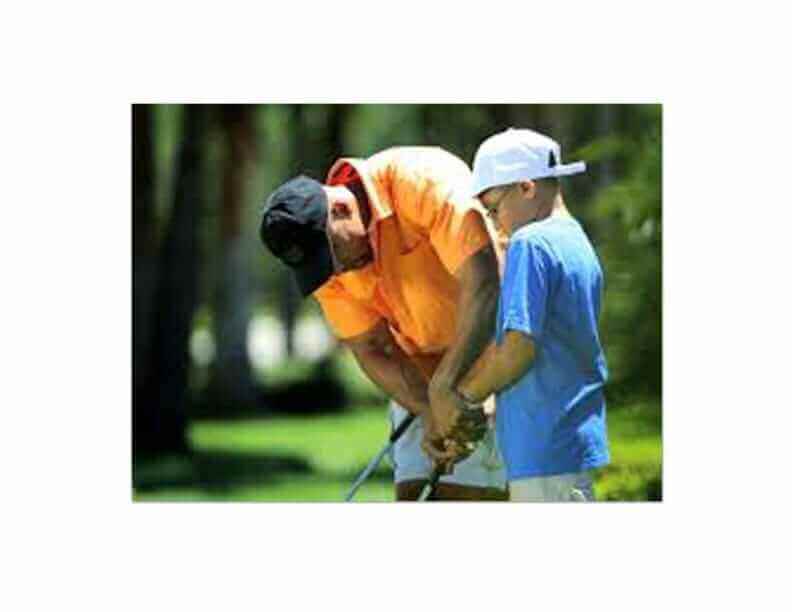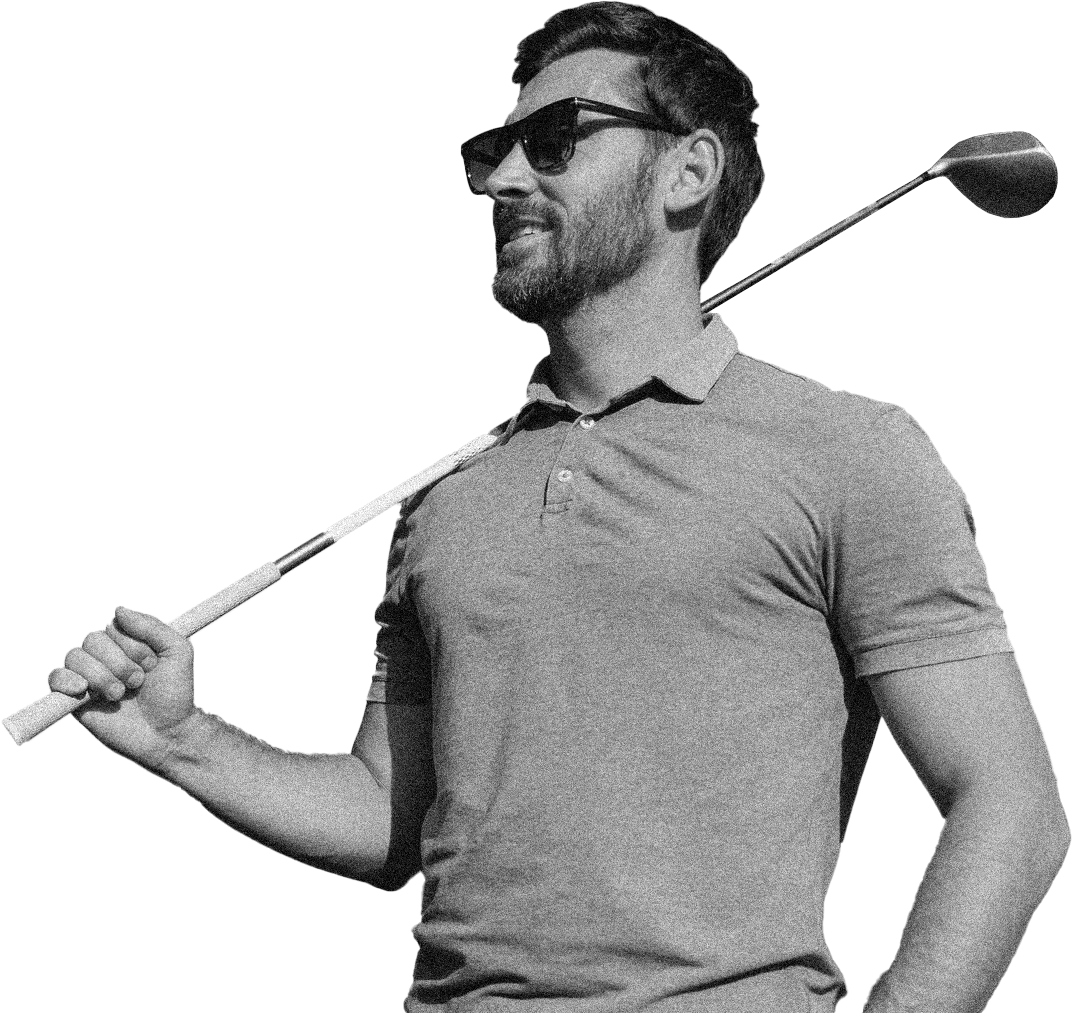This month’s blog post attempts to attack one of the most common swing faults the novice to average golfer experiences. The failure to move your weight from the backside of your swing to the front side of your swing. The rotation of your core, in conjunction with using your feet in the ground, is what allows you to make that weight transfer. And the weight transfer equates to added distance. As well as a square clubface at impact. When clients come to visit me at Orlando Golf Resorts to receive coaching from me, I often ask clients to “perform and don’t spectate” when I see them making swings like this. Let’s find out what type of golfer you are. And determine how you can be a performer, not a spectator, of your golf game.
Spectators
Spectators tend to hang back or move backwards. A spectator would rather watch a performance then be part of it. The spectator tends to perceive themself as having a lack of skill or talent. And tend not to devote time to improve their skills and talent stands. In addition, spectators have a knack of being an armchair quarterback, critiquing everything they see with little to no valid information to base their critique upon. And spectators get to leave at the end of any performance, if not before. Versus stay to end of the performance and mingle with the crowd and performers to find out more about the actual performance and the performers.
If you’re a spectator of your golf game, you probably fit into at least one, if not a few of the following buckets of golfers. How do you know which bucket(s) you’re in? By watching your swing on video. Or, remembering what you’ve been told what you look like by the free advice givers on the course.
The “Birdie” Watcher
You’re probably watching ball flight standing on your back foot. This is a major issue for most beginner golfers. The intuitive purpose of standing watching your ball flight from the back foot is to get the ball up in the air. But this movement ultimately makes the club move upward as it approaches the ball hitting the top of the ball. And mot likely leaves the clubface open at impact. The only “birdies” you’ll watch from this position are the “worm-burners” and errant shots you’re going to hit.
The Reacher
Reachers do nothing but reach with their arms. As if you’re sitting in your seat in a stadium waiting for the concessionaire to hand you the popcorn and beer to pass along to someone sitting at the end of the row you’re sitting on. Your core stays seated while your arms move from one side of your body to the other.
The Recoiler
Recoilers find a way to get only part of their weight transferred through rotation to their front foot as they swing the golf club. But not enough for them to stabilize their swing to hit against their front side. As the recoiler makes their swing, you’ll see them get approximately 50 to 60% of their weight to their forward side. But as the club moves through the hitting zone, they’ll revert their weight to their backside again. Like a shotgun recoiling back into the shooter shoulder as the trigger is pulled.
The Critic
Critics display a consistent characteristic. The grimace on their face as they watch the ball fly. No matter how the ball is flying. And how they swung the club. Critics are great at finding fault but providing no solutions to fix the fault. They’d rather provide an excuse versus find a solution.
The Thinker
Thinkers you stand over the ball so long, they can’t move when they think they’re ready to swing. You think about how to swing versus swinging. The tension caused by the numerous thoughts about how to swing creates tension. And in turn, a very choppy, disjointed swing. And in most cases, it’s the upper body placed in charge of creating rotation for the entire body. Thinkers typically have their chins touching their chest at address. They also tend to over grip the handle of the golf club both before and during their golf swings.
The Performer
To perform and don’t spectate requires that you “Perform” an action or carry out to completion. Golf Performers carry their swings out to completion by moving forward. And they enjoy being part of the action. They seek out opportunities to show Kate there to showcase their skills and talents. And they dedicate a little bit of time to continually improve their skills and talents. They’d rather evaluate past performances upon their positive merits. And build upon those positive results. Performers are willing to stay after the performance to hone their skills. As well as network with the fellow performers to evaluate new ideas about how to perform better.
How to Perform and Don’t Spectate
To play their best golf in Orlando, or anywhere, Performers find ways to move forward more efficiently. Their quest for efficiency in most instances creates improved performance. Let’s examine some ways that you perform and don’t spectate. How you can become a performer. While dedicating a minimal amount of time. Our emphasis is not on quantity, but on quality. It doesn’t take a lot of time for you to become a golf performer.
Golf Performances Start with Great Footwork
Being able to understand how your feet should work in a golf swing is paramount to your ability to perform and don’t spectate. And it doesn’t require you to swing a club or to hit a golf ball. It’s as easy as learning to rotate your body without your upper extremities.
Here’s an easy way to feel great golf swing footwork. Stand as if you’re taking your golf posture and getting ready to make a swing. Before making any movement, place your arms and hands behind your back. While remaining in your golf posture. Now pretend to make a backswing. Shift your weight to your back foot. You’ll need to push with your front foot to do so. Now shift your weight to your front foot. You’ll push off your back foot to accomplish this.
As you push using your back foot, can you get your back knee to cover or come close to your front knee? For this to be accomplished, we must transfer 90% or more of your weight from your back foot to your front foot. If you do this correctly, you’ll comfortably be balancing upon your forward leg when the movement is complete. If you’ve done this exercise correctly, you’ll find that your pelvis, belly button, and chest are all facing 90 degrees left of the direction in which you started. And your spine quite possibly could have straightened out doing so.
Feel can be Real with Your Eyes Closed
If you really want to understand how your feet work, repeat this exercise with your eyes closed. You’ll find by closing your eyes, you’re completely reliant on feeling your balance throughout the movement. Without your ability to counterbalance using your arms. Your lower body and core become the stabilization mechanism for your rotation and weight shift. As well as the actuator of that movement.
Believe it or not, spending 5-minutes daily performing the “Turn Drill” can make a big difference in your golf swing. The turn drill mimics rotational weight shifts you make and take for granted. Such as walking. Or greeting a guest who’s approaching you from either side of your body. It’s a common movement most spectator make daily. But ignore or refuse to execute when swinging a golf club.
Closing your eyes to feel your swing is the ultimate way to understand how to perform and don’t spectate.
Let’s Add the Arms
Let’s add the arms to the turn drill. When taking your posture and getting ready to swing, make the same “pushing” movement with your front fee and allow your arms to follow your weight shift to the top of your swing. Push off the back foot, using your core as the actuating force. You’ll most likely notice your arms are now trailing your body as you make the rotational weight shift forward. Can’t feel that? Close your eyes again to feel the movement. As your feet push into the ground to rotate your core, can you feel how your arms now trail the core in every movement?
Another great way to feel the sensation of your arms trailing your core is to throw a medicine ball or another object of significant weight. As if you’re going to make a golf swing. Pay close attention to perform and don’t spectate within the impact zone. The hand positions of “9 to 3” is where you’d like to feel the most “lag’ in your arms as you rotate and transfer your weight.
Check out my “Throw the Bag Drill” and you’ll have a better understanding of how to transition from a no arm rotation to a rotation utilizing your arms in the manner they were designed to work with in your golf swing.
Step Through the Curtain to Become the Performer
All performers learn that once you step through the curtain, you’re on! Golf’s no different.
There’s been a lot written about the decision box and the performance box method of approaching a golf shot. The proverbial curtain between the two boxes represents when you should stop thinking about what to do and go about doing it. But again, what are you doing to get through the curtain? You’re walking through it using your feet as leverage on the ground to move yourself forward.
As you set-up to a golf swing. There’s no rule that says you must keep your feet still. As a matter of fact, why can’t you make a swing like how you throw the medicine ball. The golf swing mimics other reactionary sports. Such as hitting a tennis ball or swinging a baseball bat. The difference between golf and these other sports is the ball is moving. In golf the ball is stationary. Which provides a conscious reason for the spectator to stay still. But the performer knows they must move forward for the ball to move forward as well.
The step through drill, and its many variations, can assist a spectator golfer with understand the basic feeling of being a performer in your golf swing. And play their best golf in Orlando, or anywhere else. It helps create a basic coordination of eyes, hands, and body. In turn, facilitating great footwork. And a rotational weight shift. Any variation of the step through drill is better than not doing it at all for the spectator. Check out this video of a basic step through drill to get your journey started from being a spectator to a performer of your golf swing.
Performers Pose when Their Performance is Complete
Think of any performance you’ve witnessed recently. Whether it’s the theater or an athletic event, at the end of any performance, the performers take a bow and pose for the audience. When taking a bow, they move forward. And as they pose for pictures performers’ chins move forward with big smiles. Spectators do not get the opportunity to pose at the end of these performances. Unless invited to do so by the actual performer.
Golfers who are performers finish forward. And pose for the audience when the swing is complete. Think about most images of golfers that you see within a newspaper, magazine or on the internet. Most all these images depict the golfer in their finished position. This position requires your body’s ability to stabilize itself on your front ankle. And balance more than 90% of your weight on the front side of your swing. Whether rotating with your arms behind your back. Or throwing a medicine ball. It is of utmost importance you are posing at the end of your swing. Holding your finished for a minimal count of five seconds. Holding the pose eliminates your body’s desire to recoil. It places you in a fantastic position to clearly see ball flight accurately. And most importantly, allows you to swing more efficiently.
To Perform and Don’t Spectate – Conclusion
Only you can decide perform and don’t spectate. Only you can choose to participate actively in your game. Or as a spectator of your golf game. Or a performer of your golf game. If you enjoy being a critic, then keep watching yourself. If you’d rather pass the popcorn, then continue to sit in your seat and not rotate as the performance goes from one side of the stage to the other.
But if you truly want to become a performer of your golf swing, you’ll need to learn the basics of making a rotational transfer of weight forward in your golf swing. To become a performer, you must constantly remind yourself of wanting to become a performer. Even using the swing thought in a rhythmic cadence, “I want to be a performer”, is a much better swing thought than the multitudes of checkpoints you’re trying to achieve.
Learn to become a performer off the golf course first. Without a golf club or ball. Using simple exercises. Allow your body and brain to understand what those movements feel like. Then as you can balance and complete the movement, add a club only to the movement. You’ll surprise yourself. Repetitive attempts to use better footwork and weight shift without a golf ball will produced sustained improvement. You’ll be able to swing the golf club smoother. Transfer more energy to the ball doing so. And be able to witness, not spectate, improved ball flight.
Besides, it’s always more fun to participate than it is to watch. Hope you come join me at one of the Orlando Golf Resorts where I “perform” my coaching programs.






